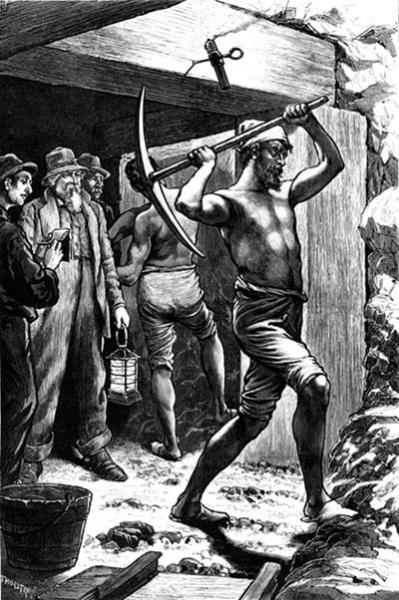Timber Square Set
Today, we learn about something called a square set. The University of Houston's College of Engineering presents this series about the machines that make our civilization run, and the people whose ingenuity created them.
I have here a copy of Agricola's 16th-century treatise on metallurgy, De Re Metallica. Book V tells us how to do underground mining, and it's pretty complete. When you dig for ore you have to shore up the tunnels so they won't cave in. Agricola describes the well-developed techniques of 1550 for setting support timbers in mines.
Three hundred years later, in 1859, silver was discovered in Virginia City, Nevada. Those veins were called the Comstock Lode. It was a remarkable find; but after a year of chasing huge veins into the hillside, the miners had opened caverns that could no longer be shored up by the techniques of 1550. The mines caved in with such regularity that miners were quitting.
Finally, the trustees of one mine heard about a very bright German mining engineer in California. His name was Philipp Deidesheimer, and he was only 28. Deidesheimer came to Virginia City, and after several weeks he was no closer to a solution than anyone else. The mines kept caving in around the pine columns used to shore up the brittle quartz substrate.
One night at a party, Deidesheimer's host -- a bee-keeper -- showed him his bee-hives. Deidesheimer suddenly saw those hives with a new set of eyes. Their cellular structure was remarkably strong and light. Why not? he thought. Why not! He rushed from the party to his office. Three days later he took a completely new sort of structure down into the mines.
Do you remember building with Lincoln Logs when you were a kid? Well, that's how he made the bracing. He used a timber frame of interlocking cubical elements, 4 to 6 feet on a side. The excavation itself could wander wherever it wanted to. Deidesheimer simply filled it up with a beehive that was cubical instead of hexagonal. He called it the square set.
Deidesheimer didn't think to patent the square set. If he had, it would have made him rich, because the square set was the first real leap forward in shoring up excavations since Agricola. Today, it's the only structure detailed in my Britannica article on mining.
Deidesheimer did become wealthy. He went off into various speculations and got rich several times. But he lost his shirt just as often, and in 1906 he died a pauper.
That brilliant insight in the summer of 1860 might've been a one-time flash in the pan, but I don't think so. When you know how to search your mind, ideas do come. It's too bad Deidesheimer didn't stay in engineering. That's where a person who can look at a beehive and change the world -- should be.
I'm John Lienhard, at the University of Houston, where we're interested in the way inventive minds work.
(Theme music)
Sagan, R., One Night of Brilliant Work. American Heritage of Invention and Technology, Summer 1987, p. 64.
Agricola, G., De Re Metallica (H.C. and L.H. Hoover, eds.). New York: Dover Publications Inc., 1950.
This episode has been greatly revised as Episode 1901.

Typical timber square set bracing as illustrated in a 19th century magazine